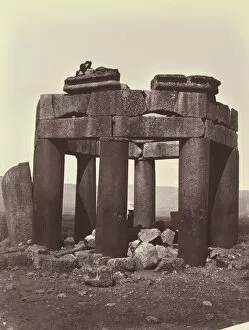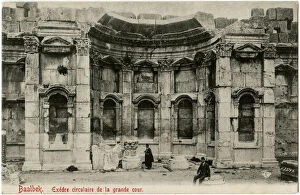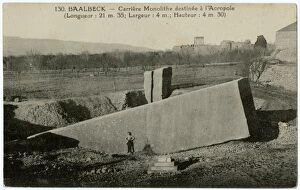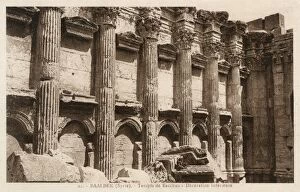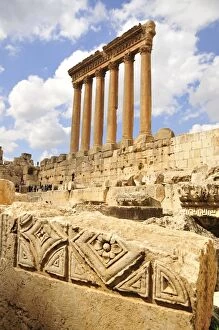Baalbek Collection (#6)
Baalbek, a mesmerizing ancient city nestled in the heart of Lebanon, holds within its ruins the secrets of a glorious past
For sale as Licensed Images
Choose your image, Select your licence and Download the media
Baalbek, a mesmerizing ancient city nestled in the heart of Lebanon, holds within its ruins the secrets of a glorious past. As we gaze upon the captivating images captured in the 19th century, we are transported back in time to witness the grandeur and magnificence that once adorned this sacred place. The Roman Temple of Venus stands tall and proud, its architectural beauty immortalized in a wood engraving from 1855. The intricate details carved into every stone tell tales of devotion and reverence towards this goddess of love and beauty. Moving further into Baalbek's enchanting landscape, we come across the awe-inspiring Temple of Jupiter. This colossal structure dominates the skyline with its towering columns and majestic presence. A snapshot from September 15, 1850, captures this breathtaking sight as if frozen in time. Exploring deeper into Baalbek's mysteries reveals hidden gems like the Circular Exedra of the Grand Court. Its circular design creates an atmosphere of tranquility amidst these ancient grounds. We can almost hear whispers echoing through time as visitors gather here to seek solace or engage in philosophical discussions. As our eyes wander over these remarkable ruins, they catch glimpses of unique artifacts such as a gargoyle from Sanctuary of Jupiter Heliopolitanus. These mythical creatures guard their sacred domain with an air of mystique and intrigue. Baalbek's allure extends beyond temples dedicated to gods; it encompasses structures like the Temple of Bacchus too. This testament to Roman architecture showcases intricate carvings that depict scenes from mythology while honoring Dionysus - god of wine and revelry. Walking among Baalbek's Roman Ruins evokes feelings both humbling and exhilarating simultaneously. Each step taken on these hallowed grounds connects us with generations long gone but never forgotten – reminding us that history is not just words on paper but tangible remnants left behind by those who came before us.



